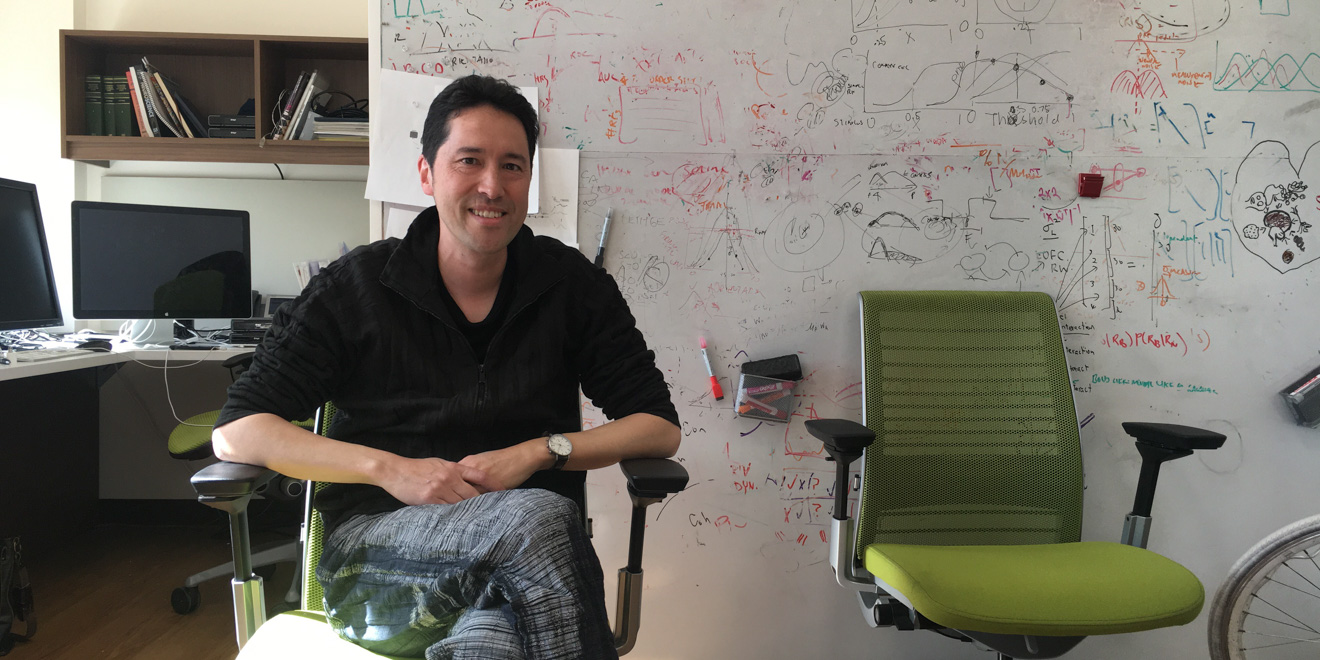When Katherine Gjertsen ’21 and her classmates dissected a sheep brain during section for PSYCH 50: Introduction to Cognitive Neuroscience, she said she was delighted.
“It was insane in the brain,” Gjertsen said.
Sheep brain dissection is one among many interesting activities planned for students in PSYCH 50, a course that aims to provide an in-depth exploration of cognitive function in the brain, including perception, hearing, memory, learning, consciousness, attention and decision making.
Taught by assistant psychology professor Justin Gardner, PSYCH 50 is an interdisciplinary overview of cognitive neuroscience, the study of human behavior and how it is implemented by the brain.
“[The course] gives you new perspectives on your own behaviors, whether it’s from the perspective of learning or dopamine and value-based decision-making,” Gardner said.
Emma Master ’19, an undergraduate teaching assistant (TA) for the course and former PSYCH 50 student, said she is intrigued by cognitive neuroscience because of the abundance of research in such a complex field.
“It’s amazing how much we’ve been able to learn about how low-level processes like neurons firing can give rise to our perceptual experiences, like remembering a particularly tasty slice of pizza or recognizing a face in a crowd,” Master said. “In PSYCH 50, you can learn about the processes you take for granted in everyday life, in a fun and accessible but concrete way.”
Gardner said he hopes to attract a range of students to the class with the highly interdisciplinary nature of cognitive science as a field. To encourage students to register, there are no prerequisite courses — a common barrier to enrollment. Given its introductory nature, the course is tailored toward freshmen and sophomores.
According to Gardner, the brain is a complex subject to teach to students without previous background in subjects like neurobiology, psychology or mathematical modeling. He said he works to reconcile this by framing systems of the brain at different levels of abstraction, providing multiple perspectives through which students may learn the material.
According to Master, students learn about computational processes of the brain “from the way the neurons are interacting at the lowest level to the algorithms that govern their interactions, building all the way up to the goal of the system and how it feels to experience it. Learning about these processes from a low level and building them up from there is important because it helps us put our experiences into context.”
In planning the course, Gardner said he also focused on the design of section meetings, classes in which students interact with TAs and fellow peers in a smaller-group setting. In section, students develop a deeper understanding of course material via demonstration activities, such as dissecting a sheep’s brain or triggering action potentials in a cockroach leg with rap music. According to Gardner, TAs for PSYCH 50 have devoted significant effort to designing interactive games, tutorials and small group work to make abstract concepts more tangible for students.
Out of the 10 TAs for the class, five are current undergraduate students. Gardner said he believes that undergraduate TAs are valuable assets because they provide a refreshing perspective, one that “might be missing to someone like myself who’s been doing this for such a long time and can’t remember what it’s like to engage with this material in the first place.”
In addition to teaching, Gardner also conducts research in his own lab at Stanford. The Gardner Lab attempts to understand how specific cognitive processes, with a focus on human perception, relate to cortical brain activity. According to Gardner, the studies conducted in his lab are intricately linked to the topics covered in PSYCH 50. However, he said that PSYCH 50 is a much broader overview of the state of current research in the field, while his research is focused on more specific cognitive processes in the visual cortex, such as human motion perception, eye movements and contrast representation. Gardner added that teaching PSYCH 50 helps him re-engage in broader topics in cognitive neuroscience.
To adapt to new discoveries in neuroscience, Gardner said, he anticipates that the course material will necessarily adjust to reflect the advancing field.
“There’s a lot that we don’t know [about cognitive neuroscience], and I think that’s almost as exciting as the fact that we know so much about it,” he said. “The course that I would teach 10 years from now will be very different from the course I’m teaching now, which I think is a really exciting prospect.”
Contact Alex Tsai at aotsai ‘at’ stanford.edu.
